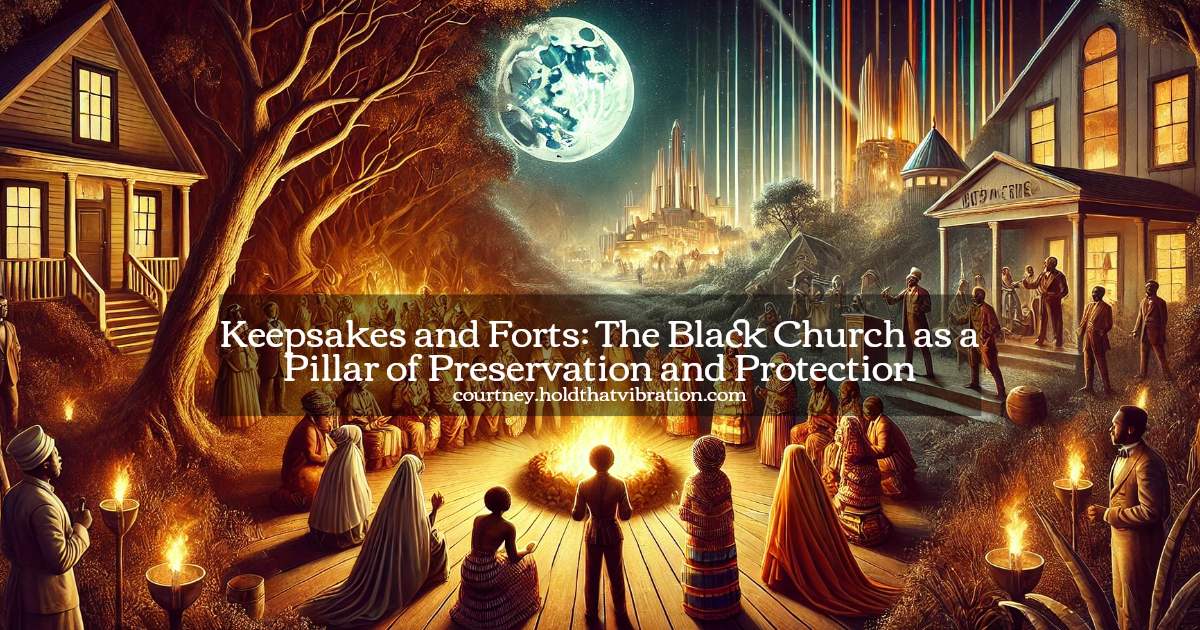“Legacy of Brush Arbor Meetings – Beneath the cover of brush in the ravines and woodlands, brush arbor meetings took place into the night after the churches of enslaved peoples’ masters where the gospels were transformed and enveloped in preaching, praise, and worship through song. In secrecy, muffled by quilts and dampened rags, Africans were able to rewrite the Christian faith to not only spread belief but messages as well (Hush Harbors: The Secret and Sacred Worship of the Enslaved). According to Raboteau, “Texts from the Bible, which most slaves could not read, were explicated by verses from the spirituals.”
Hush Harbors: The Secret and Sacred Worship of The Enslaved
“The preacher would sit in on their knees in the middle of the circle as well, bending over to talk into a bowl or tub of water to help muffle sound. “Steal Away To Jesus” was one of the “code” songs that the enslaved might use to notify each other of the secret worship meetings.”
“The preacher would sit in on their knees in the middle of the circle as well, bending over to talk into a bowl or tub of water to help muffle sound. “Steal Away To Jesus” was one of the “code” songs that the enslaved might use to notify each other of the secret worship meetings.”
Hush Harbors: The Secret and Sacred Worship of The Enslaved
“Songs such as “Steal Away to Jesus”, “Swing Low, Sweet Chariot”, “Wade in the Water” and the “Gospel Train” are songs with hidden codes, not only about having faith in God, but containing hidden messages for slaves to run away on their own, or with the Underground Railroad.[2][3]
The song was composed by Wallace Willis, a slave of a Choctaw freedman in the old Indian Territory, sometime before 1862.[4]”
“The first people to arrive at the meeting used a broken tree bough to point towards the hush harbor. The slaves then hung quilts to create a tabernacle. In an effort to suppress the sounds, the slaves dampened the quilts and filled a kettle with water.” For Those Before
Liberating Church: A 21st Century Hush Harbor Manifesto
“This book offers a guide for anyone who wants to embrace innovative models for building spaces of faith and activism with structural critique and spiritual power.”
